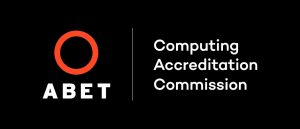(a). Analyze a complex computing problem and to apply principles of computing and other relevant disciplines to identify solutions.
a.1. Identify the problem and its requirements.
a.2. Analyze the computing problem.
a.3. Propose the computing solution to solve the problem.
a.4. Design appropriate solution based on the principles of computing.
(b). Design, implement, and evaluate a computing-based solution to meet a given set of computing requirements in the context of the program’s discipline.
b.1. Analyze the problem.
b.2. Recognize design and development principles in providing solutions.
b.3. Implement the designed solution for a given problem.
b.4. Evaluate the solution to meet desired needs.
(c). Communicate effectively in a variety of professional contexts.
c.1. Recognize the need to communicate.
c.2. Communicate effectively with others using a variety of contexts and formats which include writing, speaking, reading, listening and interpersonal skills.
c.3. Demonstrate effective communication skills.
(d). Recognize professional responsibilities and make informed judgments in computing practice based on legal and ethical principles.
d.1. Recognize professional responsibilities needed in the computing practice.
d.2. Practice the code of professional ethics based on legal and ethical IT principles.
d.3. Demonstrate the characteristics of a responsible IT professional.
(e). Function effectively as a member or leader of a team engaged in activities appropriate to the program’s discipline.
e.1. Researches and gathers information.
e.2. Fulfill duties of team roles
e.3. Shares in work of team.
e.4. Listens to other teammates.
(f). Use systemic approaches to select, develop, apply, integrate and administer secure computing technologies to accomplish user goals.
f.1. Identify the user needs and requirements in developing computer-based systems.
f.2. Correlate the user needs with the design of the computer-based systems.
f.3. Create the design, evaluate, and implement the computer-based systems.
SCHOOL YEAR 2018-2019
The program enables students to attain, by the time of graduation:
(a). An ability to apply knowledge of computing and mathematics appropriate to the discipline.
a.1 Understand the concepts of mathematics and computing.
a.2 Identify the relationship of mathematics and the principles of computing.
a.3 Apply the knowledge of mathematics in developing computing solutions.
(b). An ability to analyze a problem, and identify and define the computing requirements appropriate to its solution.
b.1 Learn to analyze the problem.
b.2 Identify the requirements.
b.3 Propose a solution.
(c). An ability to design, implement and evaluate a computer-based system, process, component, or program to meet desired needs.
c.1 Identify the problem and its requirements.
c.2 Analyze the problem.
c.3 Gather data.
c.4 Formulate several solutions.
c.5 Select the best solution to the problem.
c.6 Apply the selected solution.
(d). An ability to function effectively on teams to accomplish a common goal.
d.1 Researches and gather information.
d.2 Fulfill duties of team roles.
d.3 Shares in work of team.
d.4 Listens to other teammates.
(e). An understanding of professional, ethical, legal, security and social issues and responsibilities.
e.1 Understand the professional, ethical, legal, security and social issues.
e.2 Practice the code of professional ethics.
e.3 Demonstrate the characteristics of a responsible IT professional.
(f). An ability to communicate effectively with a range of audiences.
f.1 Recognize the need to communicate.
f.2 Utilize appropriate communication techniques suitable to the identified type of audience.
f.3 Demonstrate effective communication skills.
(g). An ability to analyze the local and global impact of computing on individuals, organizations and society.
g.1 Identify the current status of local and global computing environment.
g.2 Determine the impact of computing on individuals, organizations and society.
g.3 Respond responsibly and adjust to the current computing environment.
(h). Recognition of the need for and an ability to engage in continuing professional development.
h.1 Acquire learning from attended seminars and trainings.
h.2 Observe the real-work environment.
h.3 Gain competency from industry immersion.
(i). An ability to use current techniques, skills and tools necessary for computing practice.
i.1 Learn the different techniques and tools needed for computing processes.
i.2 Equip oneself with the techniques and skills appropriate in the computing field.
i.3 Apply the different techniques and tools needed for computing practice.
(j). An ability to use and apply current technical concepts and practices in the core information technologies.
j.1 Learn the different technical concepts and practices in the core information technologies.
j.2 Equip oneself with the techniques and skills appropriate in the IT field.
j.3 Apply the different technical concepts and practices in the core information technologies.
(k). An ability to identify and analyze user needs and take them into account in the selection, creation, evaluation and administration of computer-based systems.
k.1 Identify the user needs and requirements in developing computer-based systems.
k.2 Correlate the user needs with the design of the computer-based systems.
k.3 Create the design, evaluate and implement the computer-based systems.
(l). An ability to effectively integrate IT-based solutions into the user environment.
l.1 Conduct needs assessment of the target beneficiaries.
l.2 Determine the appropriate IT-based solutions based on the identified needs.
l.3 Develop and integrate the IT-based solutions.
(m). An understanding of best practices and standards and their applications.
m.1 Determine the best practices and standards suited to the needs of industry and society.
m.2 Understand the situation when to apply the best practices learned.
m.3 Relate the understanding of the code of ethics of IT professionals to the best practices and applications.
(n). An ability to assist in the creation of an effective project plan.
n.1 Analyze a problem.
n.2 Describe requirements specification appropriate to computing problems.
n.3 Design, construct and evaluate a software system to meet desired needs.
n.4 Implement the solution.


